How hiking and shepherding work together to maintain a tradition as old as Spain itself
Alejandro Jiménez opens up a gate and whistles, watching as more than 500 sheep amble out of their pen and into a green pasture. I admire their soft fur and curved faces as they move past me, but they ignore us; their focus is the cool green grass around us.
Jiménez cares for these sheep on borrowed land. For over a decade, he has walked with them across Spain from his home in Valladolid to this pasture outside of Madrid—over 100 miles—where the warmer environment allows them to live out the winter with a healthy amount of grass. He is 80 years old, though he could pass for an easy 65. “It’s the goat milk,” he explains later, pushing a recycled plastic 2-liter coke bottle full of the stuff into my hands, insisting that I take it home with me. I don’t have the authority to doubt him, or to reject his generous gift. He is an expert in these things, as he has lived them his whole life.
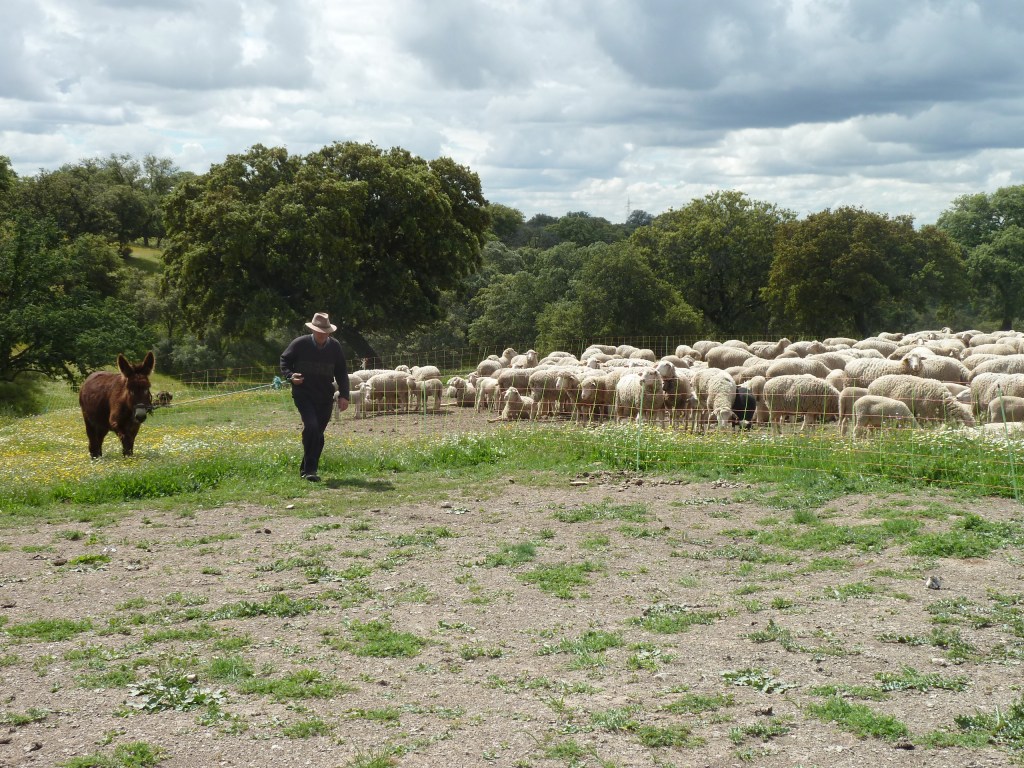
Alejandro Jiménez with his flock outside of Madrid | Photo: Lara Hamburger
Every year since he was a young man, he and his flock have left his village of Carpio, in north-central Spain, saying goodbye to his wife and children, who he won’t see again for the next six months while he spends the winter in greener pastures. For the last 12 years, he has walked with his more than 3,000 sheep to a small village outside of Madrid. He’s used to living away from his family in the way that’s traditional for a shepherd: isolation, nature and lots of work.
The shepherding that he practices is known as the trashumancia, or the transhumance in English, and it’s a tradition as old as Spain itself.
A Short History of a Long Walk
The transhumance is an ancient practice in which shepherds hike with their flocks from warmer pastures in the summer to cooler and wetter invernaderos, or wintering pastures. The Iberian Peninsula is home to an intensely hot and dry climate, especially during summer months, which historically didn’t support intensive agricultural practices due to lack of arable soil and water. As such, raising livestock has historically been important as a food source and economic base for many rural Spaniards, and moving the flocks from place to place is an economical way to ensure the animals get enough fresh food throughout the year.
Over time, the trodden paths used by the shepherds and their flocks became roads, and while some roads began to be shared by horses and later cars, others began disappearing—either becoming smaller without the sufficient width to support an entire flock of sheep, or slowly incorporated into neighboring farms. Sensing the loss of valuable natural space and cultural history, the government voted to protect these livestock roads: That means that, despite the development of cities with their roads and highways, the shepherds maintain the same right-of-way that they enjoyed 500 years ago on nearly 80,000 miles of vías pecuarias, or drove roads, which crisscross the Iberian Peninsula.
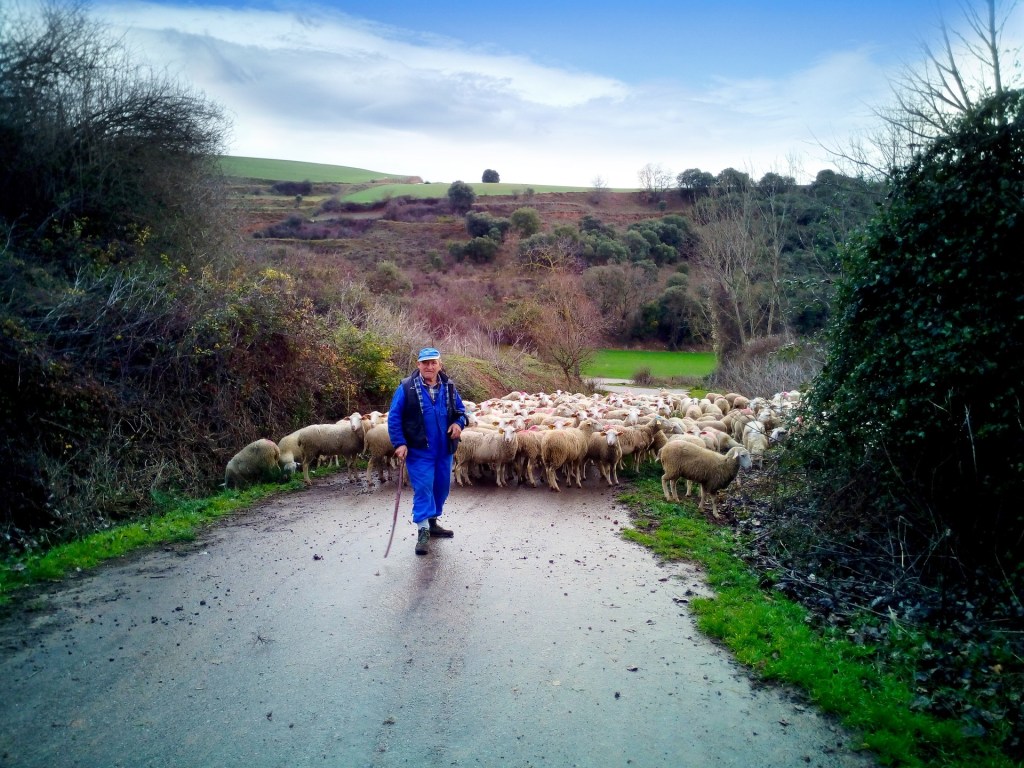
Shepherds often have to use paved roads if the drove roads are inaccessible. Photo: Pixabay
The transhumance nowadays is not economically viable in the way that it once was. In the 18th century, the wool market was booming, but with the rise of the Chinese wool market and cheap synthetic alternatives, ranchers recieved less and less profit from their wool. Despite that, activists, shepherds and environmentalists continue to see shepherding as a valuable tool for landscape and resource conservation. Thanks to these important actors, the transhumance has not only remained viable in Spain but has experienced a resurgence in the last decade. This revitalization can be attributed to a variety of factors: environmental awareness, nostalgia for the past and a search for viability in an economy that has been rattled by nearly a decade of underemployment and austerity.
The Resurgence of Shepherding in Spain
Alejandro Jiménez, despite being in many ways a traditional transhumant shepherd, is part of this new resurgence. Although he learned his trade in the traditional way, on foot, he also tried his hand at more modern versions of the trek. He sent his flock by train and later on trucks, but 12 years ago decided to return to the traditional method, in which he would hike with his flock for over a week from one pasture to another. This tradition had been with his family for generations.
Those shepherds who still hike the long trails between pastures have several advantages, despite the hardships that they endure. One advantage is that, thanks to the environmental benefits of preserving this tradition, most shepherds are supported by a network of activists and conservationists. Additionally, they benefit from trails that are maintained by outdoor enthusiasts—hikers, cyclists and horseback riders enjoy the protected natural space afforded by the drove roads.
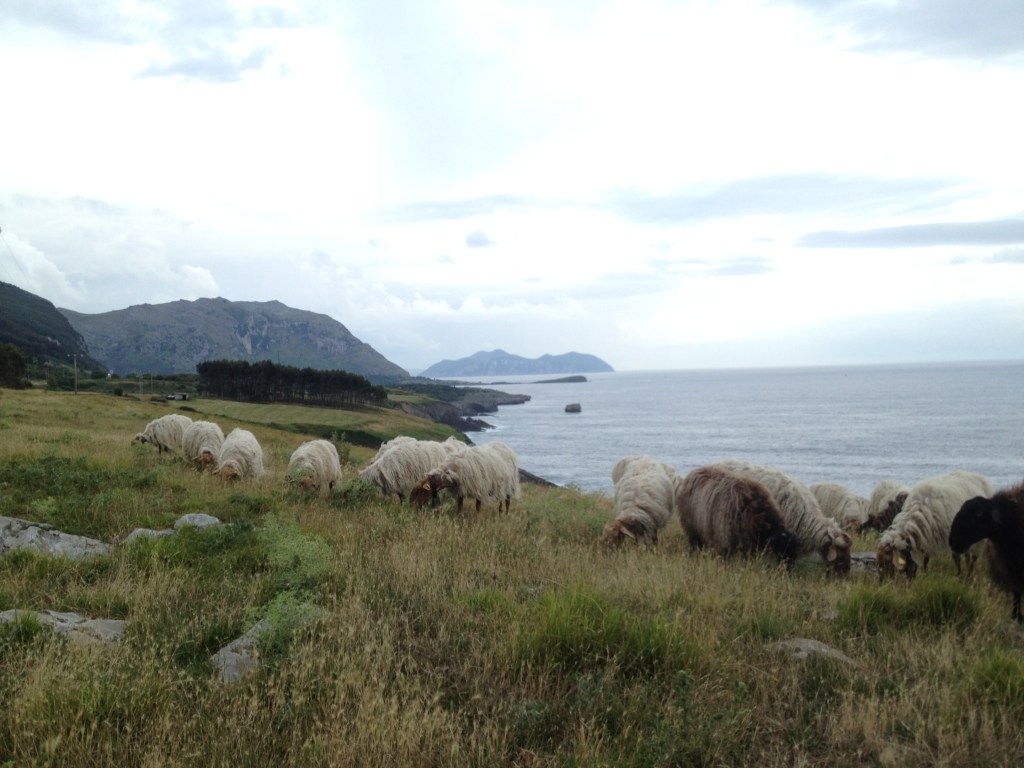
A flock left to graze by the Cantabrian Sea, Northern Spain | Photo: Lara Hamburger
While many day-hikers enjoy the use of these natural spaces, a few intrepid travelers join in on the transhumance for several days or a week. The shepherds can take advantage of this ecotourism by charging a fee for travelers, who in turn get to experience the hardships, blisters and beauty of the shepherd’s life—if only for a few days.
Jiménez’s long walk is generally 10 days, and he moves with the support and company of a team of shepherds, volunteers and curious outsiders who hike with him for a day or two. They are constantly utilizing new technologies to support their ancient practice: cell phones have become an invaluable tool for communicating about the state of the drove roads—and about what’s for dinner. Jiménez is the last surviving traditional transhumant who passes through the large and heavily populated outskirts of Madrid, but he is only one example of shepherds going back to the land in order to find meaning and economic stability from traditional practices.
The trade-off is steep for these shepherds. Most continue this work—or seek it out—because they believe in it. They know that they are responsible for the conservation of an ancient practice and the maintenance of ecological stability in Spain, but making a living is difficult, so they find economic viability where they can. Some, for example, rent out their sheep to local governments as a fire prevention tool. Others try to tap into their newfound popularity and make a tourist attraction out of the practice.
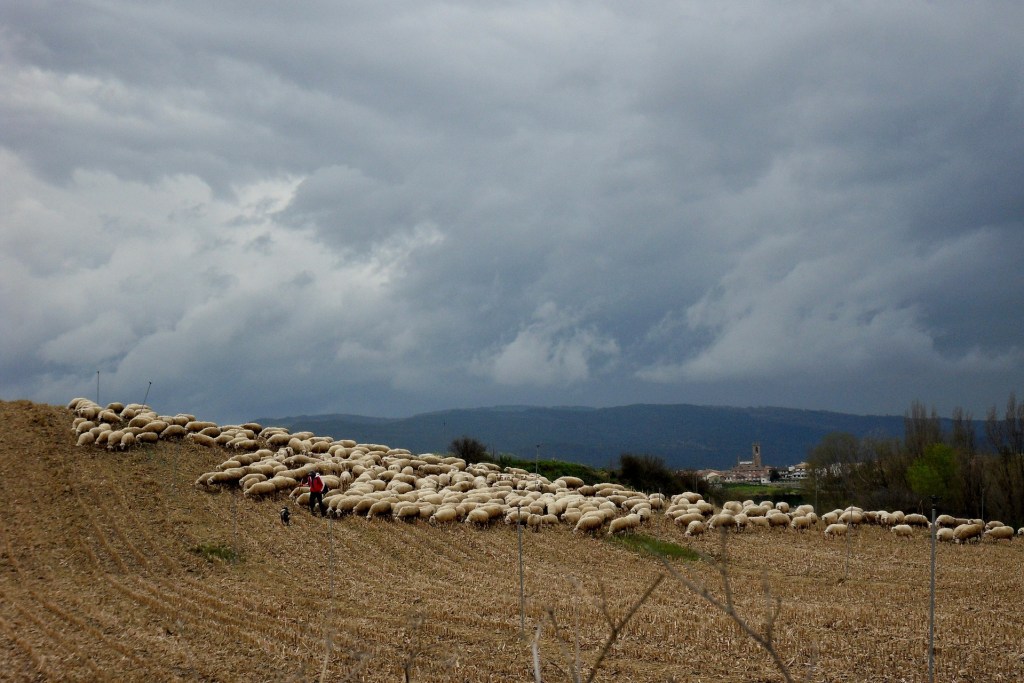
A shepherd and his dog lead the flock across a field | Photo: Pixabay
Spending long days hiking alongside flocks of ovines isn’t the only way that the public can experience or contribute to the transhumance, though. There are dozens of festivals held yearly, plus museums, activities and art shows that celebrate the ancient pathways. What’s more, citizen pressure has proved invaluable in the protection and celebration of this rite. A small team of activists, which successfully lobbied to protect the drove roads in the 1990s, set their sights on the transhumance itself. In 2016, the transhumance was declared a manifestation of immaterial cultural heritage by the Spanish government.
The cultural heritage of the transhumance is celebrated and exemplified once a year in Madrid. In October, once the weather starts cooling, residents and tourists alike are invited to the Transhumance Festival. The largest streets of the city are shut down, allowing shepherds and their flocks to pass through. For many of us who are observers, the display is nearly laughable: It can be shocking to see so many four-legged creatures in a city environment. But for many Spaniards, it represents the reality of a country that modernized quickly and nearly lost its cultural treasures. It is history splashed across a background of modernity, rural realities juxtaposed with urban chaos and loud bleating, captured on thousands of cameras, making itself relevant once again in the soundtrack of Spanish life.
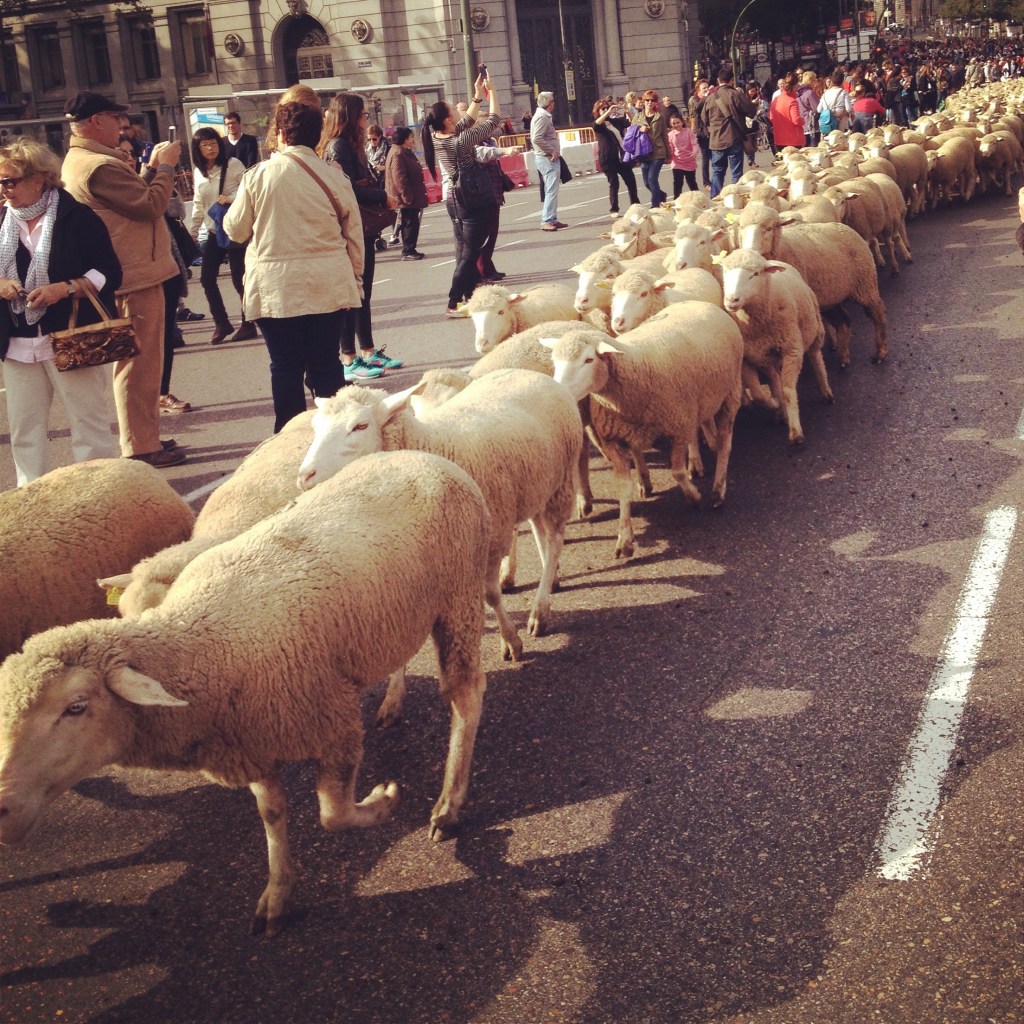
Sheep pass through Madrid during the Transhumance Festival | Photo: Lara Hamburger
Learn More
Although joining a transhumant walk has yet to become organized on the internet, many of the nearly 80,000 miles of drove roads are walkable and bikeable. Check out hiking and biking maps of the drove roads in Madrid, as well as maps of the drove roads in Andalusia. You can also participate in the Shepherd for a Day program in Basque Country, visit the Shepherd Museum in Soria, or sign up for the Live Like a Shepherd experience in Huesca or Trek with French Shepherds in the Pyrenees. Head to the Asociación Trashumancia y Naturaleza for information on the Transhumance Festival and other upcoming events.
